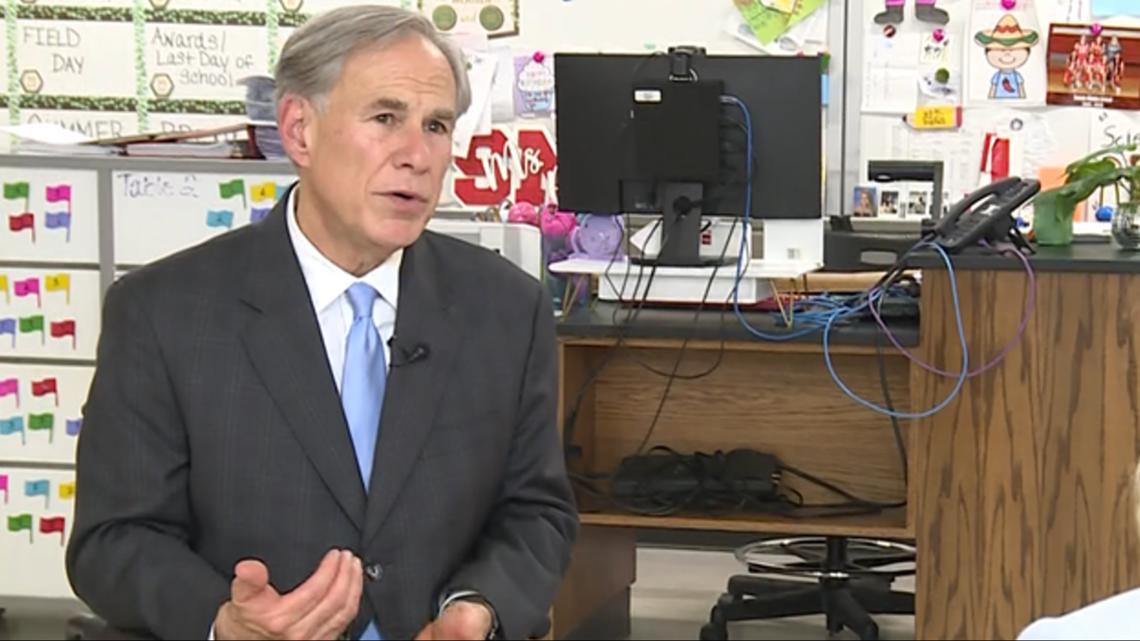
In an exclusive interview, Governor Abbott outlined his strategy, targeting teacher retention and pay, student outcomes and special education reform.
SALADO, Texas — Texas Governor Greg Abbott signed the most ambitious education bill in state history Wednesday, launching an $8.5 billion plan designed with one clear mission: making Texas the number one state for education in America.
“My goal is to have Texas ranked number one for education,” Abbott told 6 News in an exclusive interview following the bill signing ceremony. “That starts with the bill that I signed today.”
The governor’s vision is sweeping and long-term, targeting every aspect of the education system from teacher retention to student outcomes in a coordinated effort to climb the national education rankings.
House Bill 2 represents what Abbott calls a strategic blueprint based on research into why Texas education lags behind other states. The governor revealed his administration conducted extensive studies to identify the core problems holding Texas back.
“We undertook a study before session to determine why it is that some teachers were leaving the profession and we addressed both of the top two issues — one is teacher pay and the other is class discipline,” Abbott explained.
The result is a comprehensive approach that tackles teacher shortages, student performance gaps and special education challenges simultaneously — all in service of the ultimate goal of reaching the top of national education rankings.
At the heart of Abbott’s strategy lies a simple premise: you can’t have top-ranked schools without top-tier teachers. The historic teacher pay raises — the largest in Texas history — are designed to transform Texas from a state teachers leave into a destination they seek.
“The bill provides the pay to attract and keep the best teachers,” Abbott said, outlining how higher salaries will create a virtuous cycle of educational improvement.
Teachers will see these increases immediately when school starts, creating an instant signal that Texas is serious about competing for the nation’s best educators.
Abbott’s plan recognizes that reaching number one requires more than just better teachers — it demands measurably better student outcomes. House Bill 2 establishes reading and math academies specifically designed to elevate Texas students in core subjects where the state has historically struggled.
“We provide reading and math academies to make sure that our students are going to be able to advance better in both of those core subjects,” the governor explained. “Over time it should put Texas students on a very promising trajectory in both reading and math.”
The governor expects to see concrete results from these initiatives within one to two years — progress that will be essential for climbing national education rankings.
Part of Abbott’s vision for reaching number one involves ensuring Texas serves every student effectively, including those with special needs. The bill transforms special education funding from a generic approach to intensity-based support that recognizes each child’s unique challenges.
“What we’re doing under the new bill is to address the uniqueness of everybody’s different challenges who have special needs in schools,” Abbott said. “That way, we’re better able to deliver what that child needs.”
Abbott’s education strategy extends beyond school rankings to economic competitiveness. The governor emphasized that achieving number one in education will reinforce Texas’s position as a national leader in the workforce.
“This funding will work hand-in-hand with preparing students for the workforce — an area where Texas already leads the nation,” Abbott noted, connecting educational excellence to continued economic growth.
Abbott outlined a clear accountability structure for tracking progress toward the number one goal. The state will monitor teacher retention on a monthly basis and student outcomes annually, establishing measurable benchmarks for success.
“We’ll see those numbers at the end of the next school year,” Abbott said, referring to teacher retention data that will indicate whether the pay raises are working.
For student achievement, the governor expects the reading and math academies to show results within two years — progress that will be crucial for improving Texas’s national education ranking.
When asked about his education legacy, Abbott painted a picture of sustained improvement over multiple years, with 2025 as the turning point.
“The best result we could see from the session is to see Texas year after year after year climb the ladder of rankings so that eventually we’d be ranked number one,” Abbott explained. “And people, when we reach that goal, will look back and point to this session in 2025 — that’s exactly where it began.”
